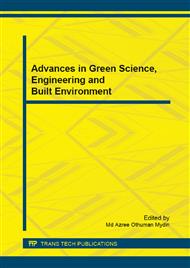p.3
p.7
p.12
p.16
p.20
p.24
p.28
p.32
Living Wall (Vertical Greening): Benefits and Threats
Abstract:
Sustainable development demands a significant approach between architecture and the environment. During the challenge of climate change, energy crisis and urban expansion, a new approach is required to address environmental problems and one of these approaches is vertical greening that can be categorized into green facade and living wall.Living wall systems (LWS) consist of plants and partly growing materials that have a number of beneficial functions, for example: increasing the outdoor and indoor comfort, ecological value, biodiversity, insulation properties, improvement of air quality mitigation of the urban heat island phenomenon, and psychological and social well-being of citizens. This paper focuses on different types of living wall systems as a method of sustainable development and their opportunities and threats were discussed.
Info:
Periodical:
Pages:
16-19
Citation:
Online since:
March 2015
Authors:
Price:
Сopyright:
© 2015 Trans Tech Publications Ltd. All Rights Reserved
Share:
Citation:


